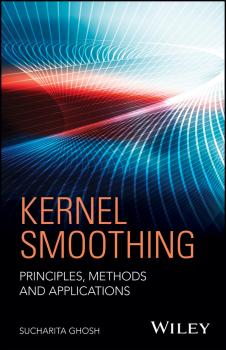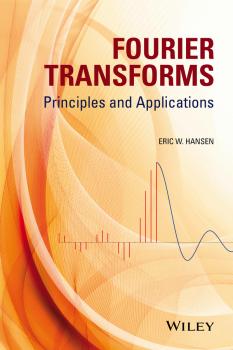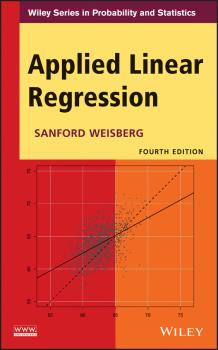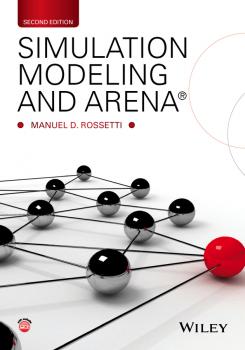Математика
Различные книги в жанре МатематикаContinuum Mechanics. The Birthplace of Mathematical Models
Presents a self-contained introduction to continuum mechanics that illustrates how many of the important partial differential equations of applied mathematics arise from continuum modeling principles Written as an accessible introduction, Continuum Mechanics: The Birthplace of Mathematical Models provides a comprehensive foundation for mathematical models used in fluid mechanics, solid mechanics, and heat transfer. The book features derivations of commonly used differential equations based on the fundamental continuum mechanical concepts encountered in various fields, such as engineering, physics, and geophysics. The book begins with geometric, algebraic, and analytical foundations before introducing topics in kinematics. The book then addresses balance laws, constitutive relations, and constitutive theory. Finally, the book presents an approach to multiconstituent continua based on mixture theory to illustrate how phenomena, such as diffusion and porous-media flow, obey continuum-mechanical principles. Continuum Mechanics: The Birthplace of Mathematical Models features: Direct vector and tensor notation to minimize the reliance on particular coordinate systems when presenting the theory Terminology that is aligned with standard courses in vector calculus and linear algebra The use of Cartesian coordinates in the examples and problems to provide readers with a familiar setting Over 200 exercises and problems with hints and solutions in an appendix Introductions to constitutive theory and multiconstituent continua, which are distinctive for books at this level Continuum Mechanics: The Birthplace of Mathematical Models is an ideal textbook for courses on continuum mechanics for upper-undergraduate mathematics majors and graduate students in applied mathematics, mechanical engineering, civil engineering, physics, and geophysics. The book is also an excellent reference for professional mathematicians, physical scientists, and engineers.
The Fitness of Information. Quantitative Assessments of Critical Evidence
Theories and practices to assess critical information in a complex adaptive system Organized for readers to follow along easily, The Fitness of Information: Quantitative Assessments of Critical Evidence provides a structured outline of the key challenges in assessing crucial information in a complex adaptive system. Illustrating a variety of computational and explanatory challenges, the book demonstrates principles and practical implications of exploring and assessing the fitness of information in an extensible framework of adaptive landscapes. The book’s first three chapters introduce fundamental principles and practical examples in connection to the nature of aesthetics, mental models, and the subjectivity of evidence. In particular, the underlying question is how these issues can be addressed quantitatively, not only computationally but also explanatorily. The next chapter illustrates how one can reduce the level of complexity in understanding the structure and dynamics of scientific knowledge through the design and use of the CiteSpace system for visualizing and analyzing emerging trends in scientific literature. The following two chapters explain the concepts of structural variation and the fitness of information in a framework that builds on the idea of fitness landscape originally introduced to study population evolution. The final chapter presents a dual-map overlay technique and demonstrates how it supports a variety of analytic tasks for a new type of portfolio analysis. The Fitness of Information: Quantitative Assessments of Critical Evidence also features: In-depth case studies and examples that characterize far-reaching concepts, illustrate underlying principles, and demonstrate profound challenges and complexities at various levels of analytic reasoning Wide-ranging topics that underline the common theme, from the subjectivity of evidence in criminal trials to detecting early signs of critical transitions and mechanisms behind radical patents An extensible and unifying framework for visual analytics by transforming analytic reasoning tasks to the assessment of critical evidence The Fitness of Information: Quantitative Assessments of Critical Evidence is a suitable reference for researchers, analysts, and practitioners who are interested in analyzing evidence and making decisions with incomplete, uncertain, and even conflicting information. The book is also an excellent textbook for upper-undergraduate and graduate-level courses on visual analytics, information visualization, and business analytics and decision support systems.
Kernel Smoothing. Principles, Methods and Applications
Comprehensive theoretical overview of kernel smoothing methods with motivating examples Kernel smoothing is a flexible nonparametric curve estimation method that is applicable when parametric descriptions of the data are not sufficiently adequate. This book explores theory and methods of kernel smoothing in a variety of contexts, considering independent and correlated data e.g. with short-memory and long-memory correlations, as well as non-Gaussian data that are transformations of latent Gaussian processes. These types of data occur in many fields of research, e.g. the natural and the environmental sciences, and others. Nonparametric density estimation, nonparametric and semiparametric regression, trend and surface estimation in particular for time series and spatial data and other topics such as rapid change points, robustness etc. are introduced alongside a study of their theoretical properties and optimality issues, such as consistency and bandwidth selection. Addressing a variety of topics, Kernel Smoothing: Principles, Methods and Applications offers a user-friendly presentation of the mathematical content so that the reader can directly implement the formulas using any appropriate software. The overall aim of the book is to describe the methods and their theoretical backgrounds, while maintaining an analytically simple approach and including motivating examples—making it extremely useful in many sciences such as geophysics, climate research, forestry, ecology, and other natural and life sciences, as well as in finance, sociology, and engineering. A simple and analytical description of kernel smoothing methods in various contexts Presents the basics as well as new developments Includes simulated and real data examples Kernel Smoothing: Principles, Methods and Applications is a textbook for senior undergraduate and graduate students in statistics, as well as a reference book for applied statisticians and advanced researchers.
Fourier Transforms. Principles and Applications
Fourier Transforms: Principles and Applications explains transform methods and their applications to electrical systems from circuits, antennas, and signal processors—ably guiding readers from vector space concepts through the Discrete Fourier Transform (DFT), Fourier series, and Fourier transform to other related transform methods. Featuring chapter end summaries of key results, over two hundred examples and four hundred homework problems, and a Solutions Manual this book is perfect for graduate students in signal processing and communications as well as practicing engineers. Class-tested at Dartmouth Provides the same solid background as classic texts in the field, but with an emphasis on digital and other contemporary applications to signal and image processing Modular coverage of material allows for topics to be covered by preference MATLAB files and Solutions Manual available to instructors Over 300 figures, 200 worked examples, and 432 homework problems
Understanding Uncertainty
Praise for the First Edition «…a reference for everyone who is interested in knowing and handling uncertainty.» —Journal of Applied Statistics The critically acclaimed First Edition of Understanding Uncertainty provided a study of uncertainty addressed to scholars in all fields, showing that uncertainty could be measured by probability, and that probability obeyed three basic rules that enabled uncertainty to be handled sensibly in everyday life. These ideas were extended to embrace the scientific method and to show how decisions, containing an uncertain element, could be rationally made. Featuring new material, the Revised Edition remains the go-to guide for uncertainty and decision making, providing further applications at an accessible level including: A critical study of transitivity, a basic concept in probability A discussion of how the failure of the financial sector to use the proper approach to uncertainty may have contributed to the recent recession A consideration of betting, showing that a bookmaker's odds are not expressions of probability Applications of the book’s thesis to statistics A demonstration that some techniques currently popular in statistics, like significance tests, may be unsound, even seriously misleading, because they violate the rules of probability Understanding Uncertainty, Revised Edition is ideal for students studying probability or statistics and for anyone interested in one of the most fascinating and vibrant fields of study in contemporary science and mathematics.
Applied Bayesian Modelling
This book provides an accessible approach to Bayesian computing and data analysis, with an emphasis on the interpretation of real data sets. Following in the tradition of the successful first edition, this book aims to make a wide range of statistical modeling applications accessible using tested code that can be readily adapted to the reader's own applications. The second edition has been thoroughly reworked and updated to take account of advances in the field. A new set of worked examples is included. The novel aspect of the first edition was the coverage of statistical modeling using WinBUGS and OPENBUGS. This feature continues in the new edition along with examples using R to broaden appeal and for completeness of coverage.
Applied Linear Regression
Praise for the Third Edition «…this is an excellent book which could easily be used as a course text…» —International Statistical Institute The Fourth Edition of Applied Linear Regression provides a thorough update of the basic theory and methodology of linear regression modeling. Demonstrating the practical applications of linear regression analysis techniques, the Fourth Edition uses interesting, real-world exercises and examples. Stressing central concepts such as model building, understanding parameters, assessing fit and reliability, and drawing conclusions, the new edition illustrates how to develop estimation, confidence, and testing procedures primarily through the use of least squares regression. While maintaining the accessible appeal of each previous edition,Applied Linear Regression, Fourth Edition features: Graphical methods stressed in the initial exploratory phase, analysis phase, and summarization phase of an analysis In-depth coverage of parameter estimates in both simple and complex models, transformations, and regression diagnostics Newly added material on topics including testing, ANOVA, and variance assumptions Updated methodology, such as bootstrapping, cross-validation binomial and Poisson regression, and modern model selection methods Applied Linear Regression, Fourth Edition is an excellent textbook for upper-undergraduate and graduate-level students, as well as an appropriate reference guide for practitioners and applied statisticians in engineering, business administration, economics, and the social sciences.
Evolutionary Optimization Algorithms
A clear and lucid bottom-up approach to the basic principles of evolutionary algorithms Evolutionary algorithms (EAs) are a type of artificial intelligence. EAs are motivated by optimization processes that we observe in nature, such as natural selection, species migration, bird swarms, human culture, and ant colonies. This book discusses the theory, history, mathematics, and programming of evolutionary optimization algorithms. Featured algorithms include genetic algorithms, genetic programming, ant colony optimization, particle swarm optimization, differential evolution, biogeography-based optimization, and many others. Evolutionary Optimization Algorithms: Provides a straightforward, bottom-up approach that assists the reader in obtaining a clear—but theoretically rigorous—understanding of evolutionary algorithms, with an emphasis on implementation Gives a careful treatment of recently developed EAs—including opposition-based learning, artificial fish swarms, bacterial foraging, and many others— and discusses their similarities and differences from more well-established EAs Includes chapter-end problems plus a solutions manual available online for instructors Offers simple examples that provide the reader with an intuitive understanding of the theory Features source code for the examples available on the author's website Provides advanced mathematical techniques for analyzing EAs, including Markov modeling and dynamic system modeling Evolutionary Optimization Algorithms: Biologically Inspired and Population-Based Approaches to Computer Intelligence is an ideal text for advanced undergraduate students, graduate students, and professionals involved in engineering and computer science.
Time Series Analysis
A modern and accessible guide to the analysis of introductory time series data Featuring an organized and self-contained guide, Time Series Analysis provides a broad introduction to the most fundamental methodologies and techniques of time series analysis. The book focuses on the treatment of univariate time series by illustrating a number of well-known models such as ARMA and ARIMA. Providing contemporary coverage, the book features several useful and newlydeveloped techniques such as weak and strong dependence, Bayesian methods, non-Gaussian data, local stationarity, missing values and outliers, and threshold models. Time Series Analysis includes practical applications of time series methods throughout, as well as: Real-world examples and exercise sets that allow readers to practice the presented methods and techniques Numerous detailed analyses of computational aspects related to the implementation of methodologies including algorithm efficiency, arithmetic complexity, and process time End-of-chapter proposed problems and bibliographical notes to deepen readers’ knowledge of the presented material Appendices that contain details on fundamental concepts and select solutions of the problems implemented throughout A companion website with additional data fi les and computer codes Time Series Analysis is an excellent textbook for undergraduate and beginning graduate-level courses in time series as well as a supplement for students in advanced statistics, mathematics, economics, finance, engineering, and physics. The book is also a useful reference for researchers and practitioners in time series analysis, econometrics, and finance. Wilfredo Palma, PhD, is Professor of Statistics in the Department of Statistics at Pontificia Universidad Católica de Chile. He has published several refereed articles and has received over a dozen academic honors and awards. His research interests include time series analysis, prediction theory, state space systems, linear models, and econometrics. He is the author of Long-Memory Time Series: Theory and Methods, also published by Wiley.
Simulation Modeling and Arena
Emphasizes a hands-on approach to learning statistical analysis and model building through the use of comprehensive examples, problems sets, and software applications With a unique blend of theory and applications, Simulation Modeling and Arena®, Second Edition integrates coverage of statistical analysis and model building to emphasize the importance of both topics in simulation. Featuring introductory coverage on how simulation works and why it matters, the Second Edition expands coverage on static simulation and the applications of spreadsheets to perform simulation. The new edition also introduces the use of the open source statistical package, R, for both performing statistical testing and fitting distributions. In addition, the models are presented in a clear and precise pseudo-code form, which aids in understanding and model communication. Simulation Modeling and Arena, Second Edition also features: Updated coverage of necessary statistical modeling concepts such as confidence interval construction, hypothesis testing, and parameter estimation Additional examples of the simulation clock within discrete event simulation modeling involving the mechanics of time advancement by hand simulation A guide to the Arena Run Controller, which features a debugging scenario New homework problems that cover a wider range of engineering applications in transportation, logistics, healthcare, and computer science A related website with an Instructor’s Solutions Manual, PowerPoint® slides, test bank questions, and data sets for each chapter Simulation Modeling and Arena, Second Edition is an ideal textbook for upper-undergraduate and graduate courses in modeling and simulation within statistics, mathematics, industrial and civil engineering, construction management, business, computer science, and other departments where simulation is practiced. The book is also an excellent reference for professionals interested in mathematical modeling, simulation, and Arena.









